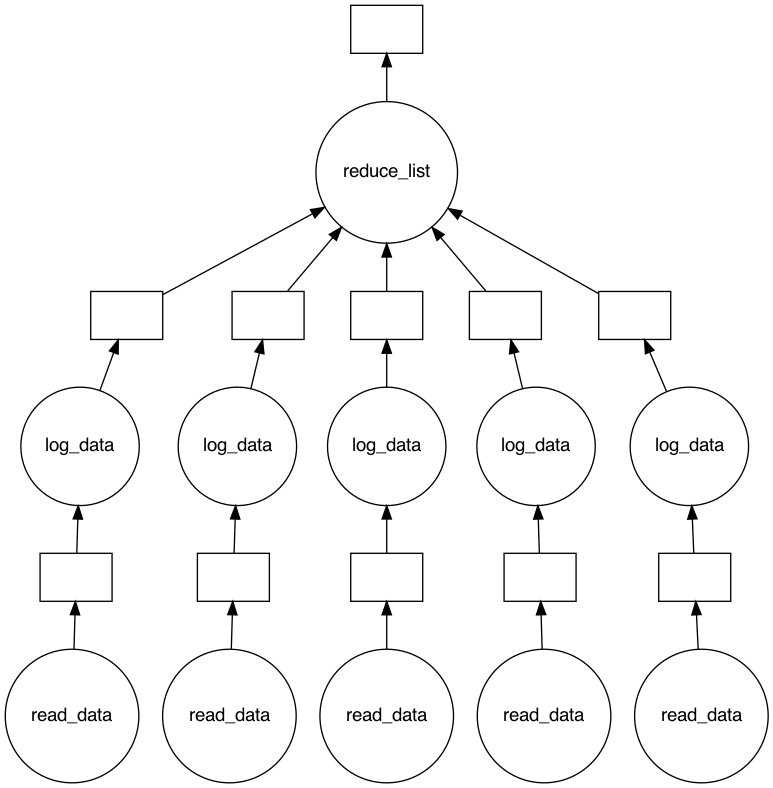🚩 Create a free WhyLabs account to get more value out of whylogs!
Did you know you can store, visualize, and monitor whylogs profiles with theWhyLabs Observability Platform? Sign up for afree WhyLabs accountto leverage the power of whylogs and WhyLabs together!
Dask Profiling#
Hi! If you have a Dask available on your processing and modeling environment, you can leverage its delayed API to profile data with whylogs in a distributed way, and this is what we are going to cover in this example notebook 😃
[1]:
# Note: you may need to restart the kernel to use updated packages.
%pip install dask 'whylogs[viz]'
Note: you may need to restart the kernel to use updated packages.
[2]:
from glob import glob
from typing import List
from functools import reduce
import dask
import pandas as pd
import whylogs as why
from whylogs.core import DatasetProfileView
Read data#
We will use a functional programming approach to read the data and profile it in parallel and then merge them back to a single profile, that can be further used to investigate important information, such as with a Constraints validation, a drift report, and much more. First, we will use the pandas library to read parquet files, assuming you have a directory with some parquet files available.
[3]:
@dask.delayed
def read_data(parquet_file):
df = pd.read_parquet(parquet_file)
return df
Profile data#
The with pandas DataFrames in place, it is straight forward to profile your data with whylogs. To do so, let’s also define a delayed function.
[4]:
@dask.delayed
def log_data(df: pd.DataFrame):
return why.log(df).view()
Merge profiles#
The last step in the pipeline is to merge the profiles we have created in the previous delayed steps, where we will take in a list of DatasetProfileView objects and turn them into a single profile that will contain the summary of relevant metrics that represent our data.
[5]:
def reduce_list(profile_list: List[DatasetProfileView]):
result = reduce(lambda x, y: x.merge(y), profile_list)
return result
[6]:
data_list = [f"https://whylabs-public.s3.us-west-2.amazonaws.com/whylogs_examples/dask_example/example_{number}.parquet" for number in range(5)]
Chaining execution#
Now we will chain together the logic of our code execution, by creating the output list with the profiles from the read data. With it, we can create a Dask delayed task, and this will make sure to create our task graph properly.
[7]:
output = []
for file in data_list:
df = read_data(parquet_file=file)
profile_view = log_data(df=df)
output.append(profile_view)
task = dask.delayed(reduce_list)(output)
Visualizing the execution plan#
To view what the task graph looks like, we need the graphviz library available. Then we can call Dask’s visualize method and check what are the planned steps for our computations.
[8]:
%pip install -q graphviz
Note: you may need to restart the kernel to use updated packages.
[9]:
task.visualize()
[9]:

Triggering execution#
Up until now, we only have planned what to execute using the delayed decorator in our simple processes. When we want to trigger the execution, we need to call the action, and that can be done with the compute method. This will return us a single merged DatasetProfileView object.
[10]:
merged_profile_view = task.compute()
And now we can investigate important metric in our entire dataset! Let’s use whylogs’ extra visualization package to see some metrics from our data.
[11]:
from whylogs.viz import NotebookProfileVisualizer
visualization = NotebookProfileVisualizer()
visualization.set_profiles(target_profile_view=merged_profile_view)
visualization.profile_summary()
[11]:
And that’s it, you have successfully created a DatasetProfileView with whylogs in a distributed manner with Dask! 😄 If you wish to have other insights on how to use whylogs, feel free to check our other existing examples, as they might be extremely useful. Happy coding!